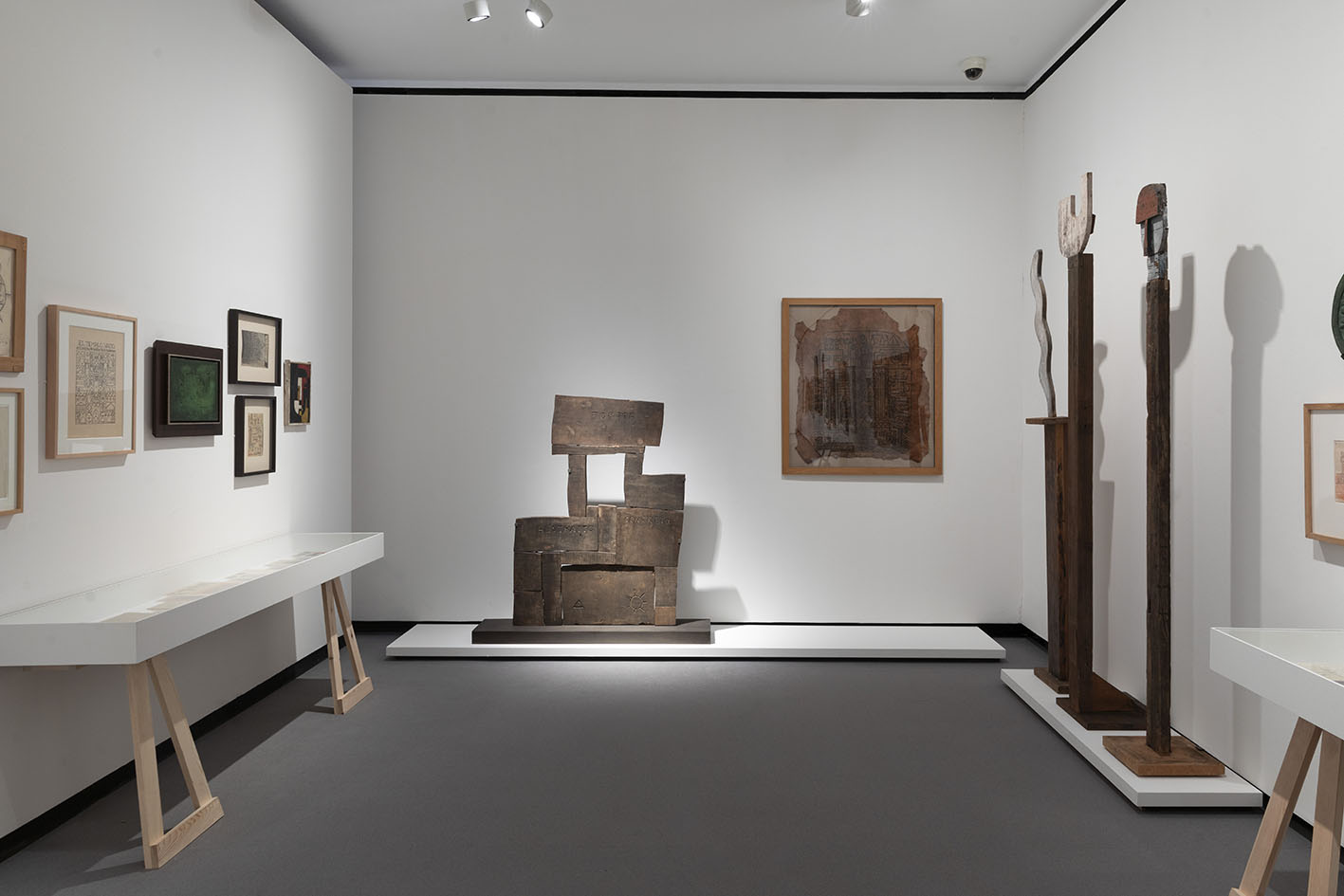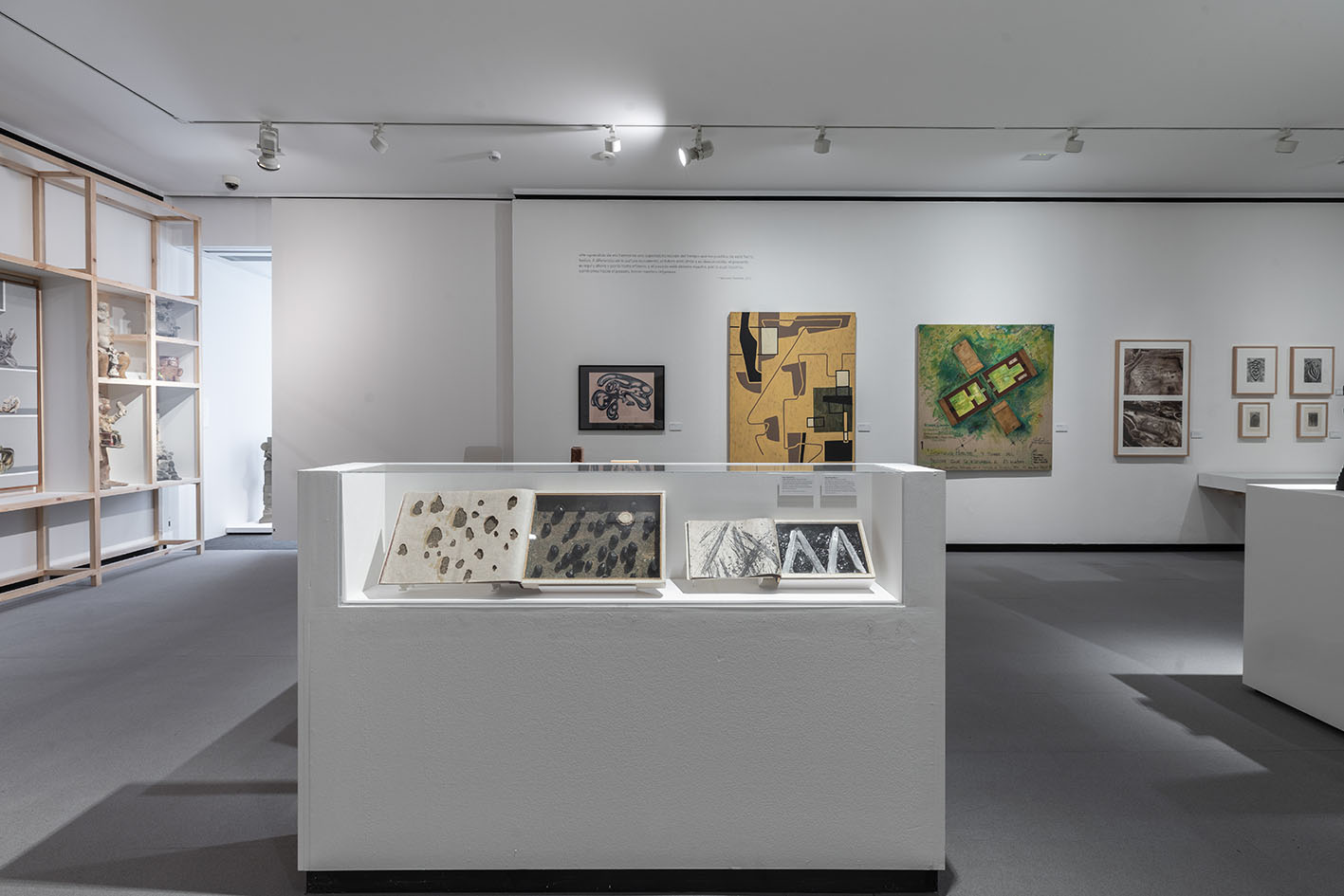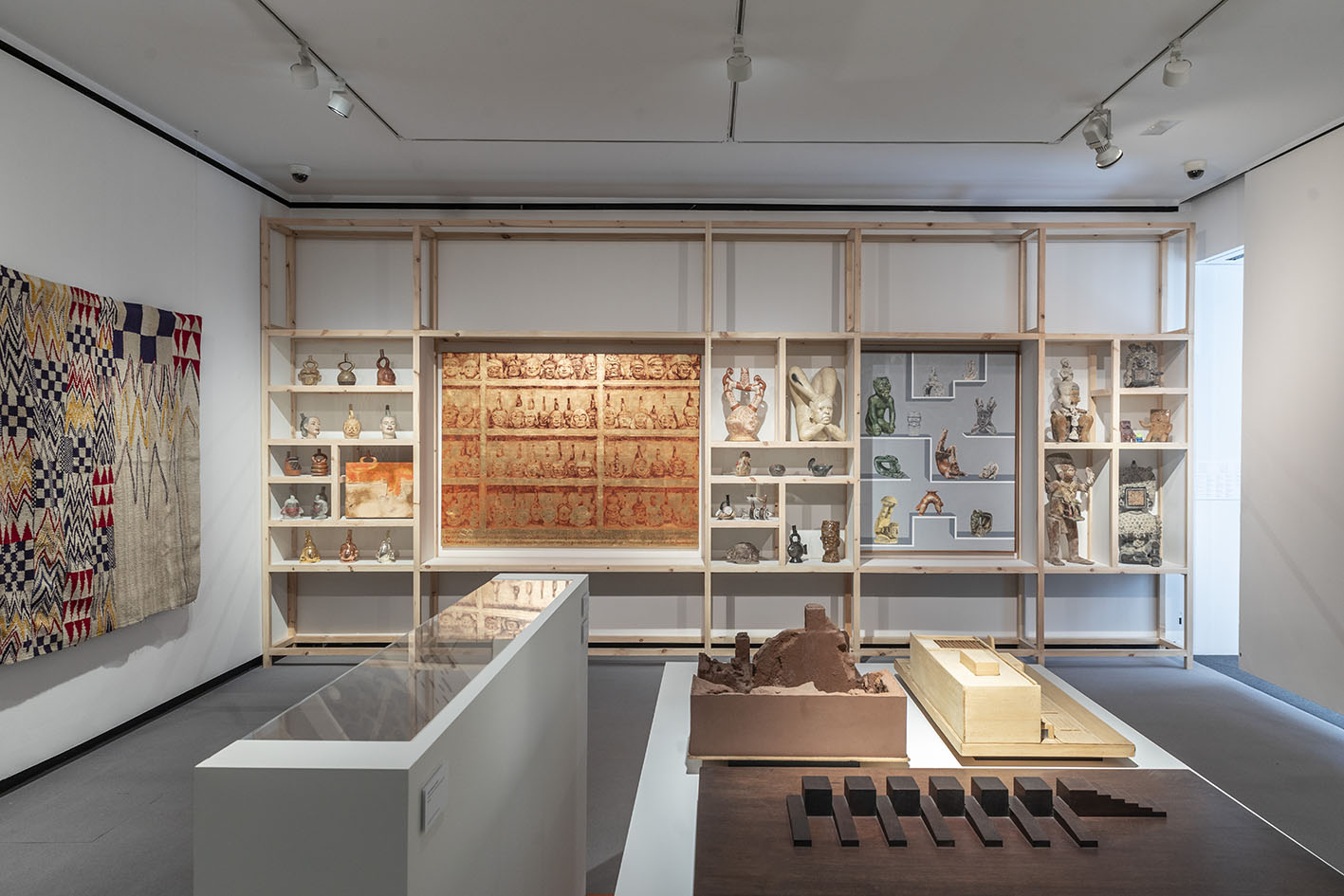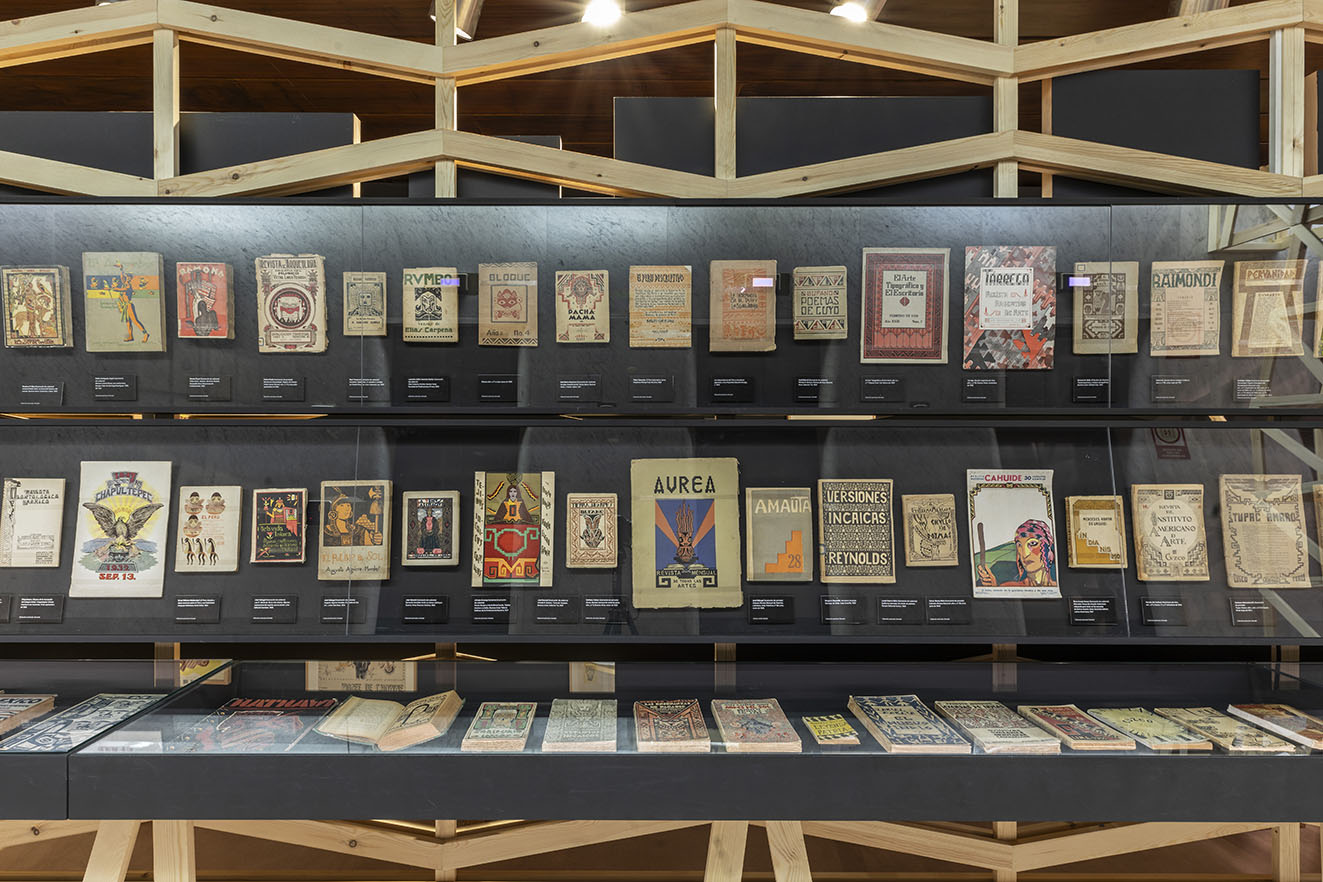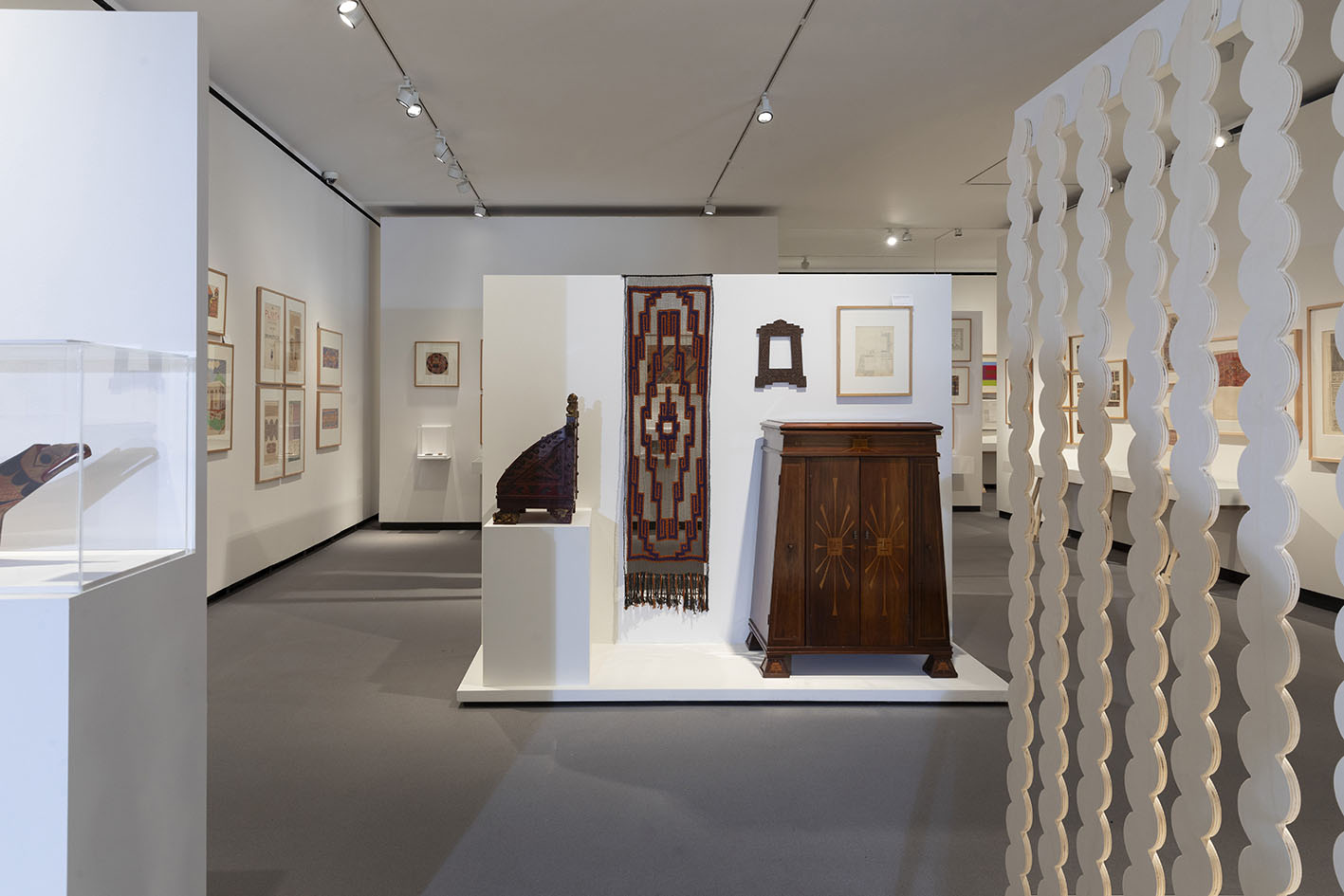On October 6, 2023, the exhibition Before America: original sources in modern culture was inaugurated at the March Foundation headquarters in Madrid, curated by guest curator Rodrigo Gutiérrez Viñuales, who was joined by those responsible for the Foundation team, Manuel Fontán del Junco and María Toledo. I had the pleasure of being there that day and of being able to tour, in several visits, this magnificent and monumental exhibition dedicated to the ways in which modern and contemporary culture appropriated the legacy of the ancient indigenous cultures that populated the enormous territory that extends from Alaska to Tierra del Fuego, before it was baptized with the name “America”. In the splendid, and also monumental, 620-page catalog, texts by thirty specialists were included and the more than 600 works exhibited were published, to which are added some that for various reasons were left out.
“Monumental” is the adjective that was imposed on me in relation to this exhibition since I learned about the project - when Rodrigo invited me to participate with a text for the catalog - since it was a grandiose and complex undertaking to bring together that enormous number of works from numerous collections and assemble them in such a way that that long and vast history of appropriations and resignifications from the end of the 18th century to the present day would become visible and tangible. History that Rodrigo reconstructed meticulously and - I dare say - obsessively, through the registration of works of various kinds (paintings, engravings, sculptures, objects, installations), documents, publications, etc., over several years . This material was presented organized in four sections that cross the conceptual and temporal variable:
Recording and reinterpretation (1790-1910): section dedicated to the rich corpus of images produced from the experience of transatlantic voyages and scientific expeditions. Here you can see archaeological drawings, landscapes, projects for universal pavilions, atlases of antiquities and historical genre paintings (recreations of the indigenous past), which illustrate the European view(s) on America.
Reinterpretation and identity (1910-1940): this section brings together works in which the role of the pre-Hispanic past in the consolidation of a national modernity is manifested. Of particular interest is the highlighting of: the relevance of the applied arts in this period (graphic design, textiles, jewelry, furniture, ceramics), the projection of the modernist rescue of the native in school education and the presence of themes and aesthetics pre-Hispanic in theater, cinema and music, which is witnessed through photographs, records, posters, etc.
Identity and invention (1940-1970): section in which Joaquín Torres García and the Escuela del Sur are present with their indelible mark on the art of the River Plate, a mark that is projected in the plastic arts of the entire period. The American artistic expressions that cast their gaze on native arts are added, as well as appropriations from late surrealism and abstractionist currents.
Invention and conceptualisms (1970-2023): conceptual art predominates here in its multiple expressions, installations, performance, video art, and new questions about the links between the pre-Hispanic past and the present become evident; especially those who become Latin American artists who feel challenged by that past that manifests itself forcefully in a material culture (lithic pieces, ceramics, textiles, buildings, sanctuaries) that is part of their heritage, and which they put into dialogue with the other legacies of contemporary times (new materialities, new problems).
On the day of the opening, Rodrigo told me (more words, less words): “I can't believe that we have managed to complete this exhibition, I always thought that this research would lead to a book, but due to its magnitude it seemed too much for an exhibition. Luckily I found a space where it was possible.” Indeed, Rodrigo, with the support and participation of Manuel and María and the entire Foundation team, achieved it, and this achievement represents, in my opinion, a double victory: that of those who carried out this challenge and, although it may sound a little abstract, that of pre-Hispanic art as an unavoidable legacy.
After the Conquest, pre-Hispanic art followed a complex material and symbolic course: during the colonial era its condition fundamentally oscillated between that of an idolatrous object that had to be destroyed - except for the gold and silver pieces that were transformed due to their monetary value. in ingots -, and that of "curiosity", a metonym (like the specimens of flora and fauna) of the New World, that anomalous, strange and extraordinary space that was collected in the cabinets of wonders [1].
From the last third of the 18th century, the moment in which the beginning of the tour of Before America is located, there is a change in the way in which these objects are conceived. Alexander von Humboldt is one of the characters who, with his work, marks a paradigm shift; the pre-Hispanic object is now considered a “document of the past.” In the picturesque Atlas that accompanies the Views of the mountain range and monuments of the ancient towns of America (1810) he presented a dozen plates with images of “antiquities and monuments” rescued for their historical-archaeological value. The vindication of the importance of knowing pre-Hispanic sculptural and architectural production involved adding to the objects collected in European cabinets and museums, the images (drawings and engravings first, photographs and films, later) of that which could not be moved. The artists will accompany both naturalists and archaeologists generating these new collections. Now not only will objects be collected in their material but also in their iconic format. This universe of images multiplies the presence and circulation of pre-Hispanic works in the modern world.
The first half of the 20th century is the moment in which pre-Hispanic objects acquire a new meaning for the European gaze, impregnated with the primitivism that characterized the development of avant-garde art (cubists, fauves, dadas, expressionists), articulated with the interests of ethnology. [2]. A new dimension is then established, aesthetics, which will function beyond religious, historical, commercial or exotic values. Contact with the art of the colonies of Africa and Oceania favored the development of the “taste” for “black art” to which that of the Amerindian peoples was homologated. But this opening towards the aesthetic and artistic dimension of the art of the Others, implied to a certain extent a colonial gesture: the African mask, the Aztec sculpture, the Polynesian fetish, became “works of art” because they “look like” the works of Picasso, Braque, Brancusi, Moore and all those who fought for an authentic break with academic tradition [3]. The “art of others” ended up being vindicated because it responded to the desires of the Western avant-garde, an operation that decentered it, turning it into a mere function of the West.
However, the art of “before America” has resisted this functionalization/domestication, as demonstrated by the power of interpellation that it maintained throughout centuries and maintains to this day. The words of Octavio Paz come to mind referring to the grandiose Aztec sculpture of the Coatlicue, unearthed in the 18th century and reburied for fear that its sacred power was still in force among the Nahuatl settlers [4]: “On high of the pyramid or buried among the rubble of a demolished teocalli, hidden among the works of an antique cabinet or in the center of a museum, the Coatlicue provokes our astonishment. Impossible not to stop before it […] Suspension of spirit: the mass of stone, a carved enigma, paralyzes our gaze” [5]. Astonishment, admiration, fear... never indifference.
This is the power that is “exhibited” in the exhibition in question, and it is because of it that throughout the 20th century primitivist views were transcended and especially Latin American artists tackled the task of investigating the pre-Hispanic heritage, allowing themselves to be challenged by it. . Interpellation that brings up questions about the present in light of the ancient inheritances that make up a local and regional identity. In particular, the works in the last section show the victory of Amerindian art over attempts at domestication and its affirmation as an unavoidable heritage.
Works by Susana Torres and Ana de Orbegoso; from left to right. Photographs from the book-catalogue “Before America”.
Just as an example, it is enough to mention: the works from the series “And what do we do with our history” (2017) by the Peruvian Ana de Orbegoso, which dialogue with the tradition of the Moche portrait huacos, projecting contemporary faces in this type of pieces, in tune with “Huaco-self-portrait” (2007) by Susana Torres; the “Chakana” (2021) in synthetic burlap by Argentine Candelaria Traverso, which recovers a symbol of struggle and resistance; the strobe animation, “Mambeadores” (2018), by Colombian Fernando Pareja, which connects us with the ritual consumption of psychoactives; the performative action sculpture, “Neo tameme” (2021-2023) by the Mexican Chavis Mármol, which consists of a delivery bicycle whose box is an Olmec head - an expression par excellence of the origins of Mexican monumental stonework - by Telgopor.
It is worth mentioning the presence of pioneering figures, such as the Chilean Cecilia Vicuña with the video “Paracas” (1983) in which she brings to life the small camelid fiber characters (shamans, weavers, dancers, llamas) of the Paraquense mantle made towards the 5th century AD on the southern coast of Peru and which is today preserved in the Brooklyn Museum.
All of these creations demonstrate the validity and vitality of pre-Hispanic art as an interlocutor and generator of questions about the American past and present that are transformed into works that in turn open new questions, reflections, in short, awareness about the meaning of being. "American people".
Notes:
1. Bovisio, María Alba “El periplo del objeto mitológico: itinerarios simbólicos del arte prehispánico entre los siglos XVI y XX”. Journal de Ciencias Sociales, Revista Académica de la Facultad de Ciencias Sociales de la Universidad de Palermo, Año 1, Nº 2, junio 2014, Buenos Aires.
2. Recordemos que, en 1927 Franz Boas publica Primitive Art con el objetivo de: “dar una descripción analítica de los rasgos fundamentales del arte primitivo” (Boas, F. El Arte Primitivo. F.C.E., México,1947: 7).
3. Clifford, J. Dilemas de la cultura. Gedisa, Barcelona, 1995.
4.El relato de las peripecias de esta escultura es absolutamente representativo del poder del arte prehispánico. Véase: Matos Moctezuma, E. y López Luján, L. (2010) Escultura monumental mexica, FCE, México, cap. III.
5. Paz, O. Los privilegios de la mirada, México,1989, p.41.
* Special for Hilario. Arts Letters Trades

